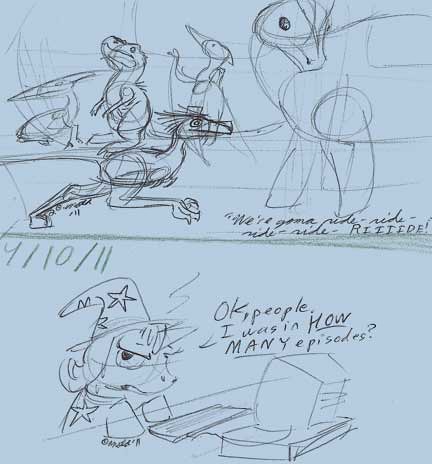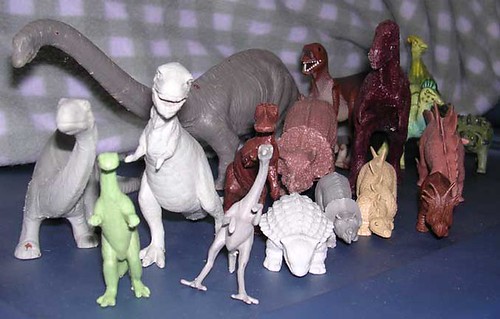
So, did everyone have a fun World Penguin Day yesterday?
One overlooked area of old Paleoart is the world of dinosaur models. (Never "dinosaur figurines" or, Heaven forbid, "dinosaur toys"?) A few years ago, I found much of my childhood collection intact and took a few pictures (all the images in this post are on Flickr, so click to see bigger versions).
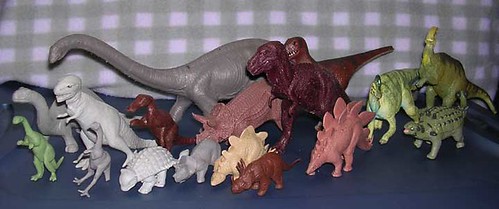
From left to right, we have models from roughly the sixties, the eighties, and the nineties. The first row probably date from around the same time as a book we're about to explore.
The middle section is mostly made up of Invicta models. I got these in the 1980's when they were still a museum gift shop staple, but it turns out they were produced beginning in the 70's. That helps explain why all the tails are staunchly dragging along the ground. Finally, the three fellows in back are as far as I got in my attempt to collect the lovely Carnegie Collection. (And yes, there is a Dino-Riders Deinonychus lurking in the background; sometimes thrift stores are the best Thing.) Note the differences between the models from different years that depict the same (or similar) animals.
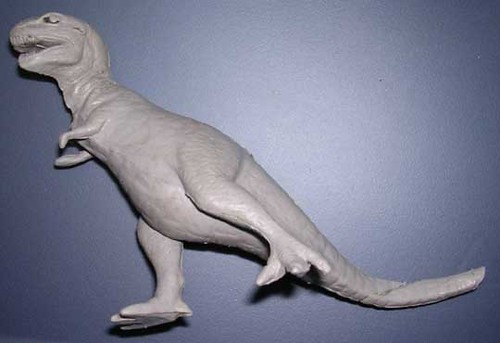
Here's a detailed look at that very strange 70's Tyrannosaurus. I know they hadn't found 'Sue' yet, but it's really hard not to make fun of those little flipper-hands, the dragon feet, the giant crotch, and the shark face.
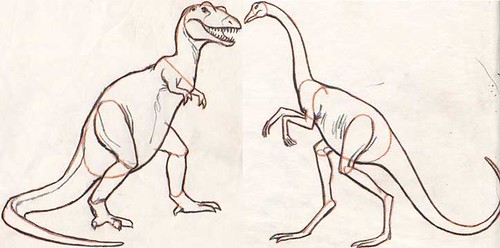
Which brings us to these illustrations from Lee J. Ames' Draw 50 Dinosaurs and Other Prehistoric Animals, published in 1977 by Doubleday and company.
The Lee J. Ames drawings (I am only including the final finished pieces here) are an excellent time capsule of how many prehistoric animals were thought to look *right on the cusp* of the "Dinosaur Renaissance". Here's a rather goofy looking Tyrannosaurus and an Emo Ornithomimid. As you can see, they are of a piece with the models above.
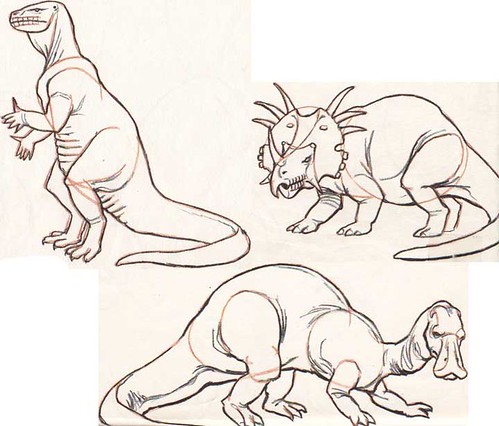
Iguanodon and Styracosaurus with very strange mouths, and a Hadrosaurus who appears to be suffering emotional problems.
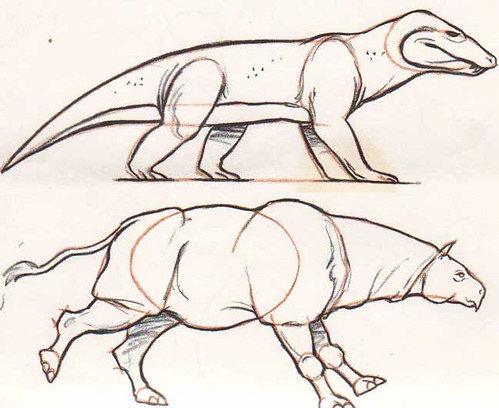
And while they are a not-quite-mammal-but-close and a mammal, I couldn't ignore this buck-naked Cynodont and amazingly spry Indricothere.
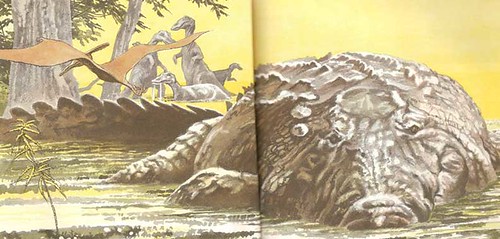
Our next book in this grab bag is The Crocodiles Still Wait, written by Carol Carrick and illustrated by Donald Carrick. An oddly moving story of a mother crocodile raising her brood in the late Cretaceous period. The crocodiles themselves still look terrific and the dinosaurs...
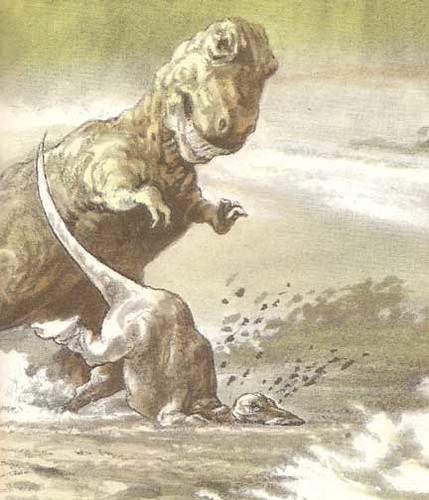
They have not aged well. Heck, look at this... Troodontid? Ornithomimid? Your guess is as good as mine (I'm going to call him Derpy Claws):

Next up is The Largest Dinosaurs, written by the great nonfiction children's book author Seymour Simon and illustrated by Pamela Carroll.
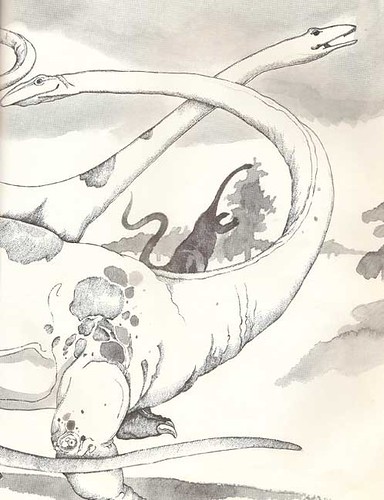
An overview of Sauropods and their lives. The ink-wash illustrations can get a little strange. You may recognize the above illustration from my review of "Dinosaur Rock". This is basically the image of sauropods I had when I was very young: not big, dopey swamp-dwellers but still kind of goofy and rubber-necked.

As silly as this Brachiosaur is (those feet!), I love the dramatic perspective here:

Finally, and certainly the most unusual book we're going to see today, here are the dinosaur-centric scenes from Life Story, written and illustrated by the wonderful Virginia Lee Burton.
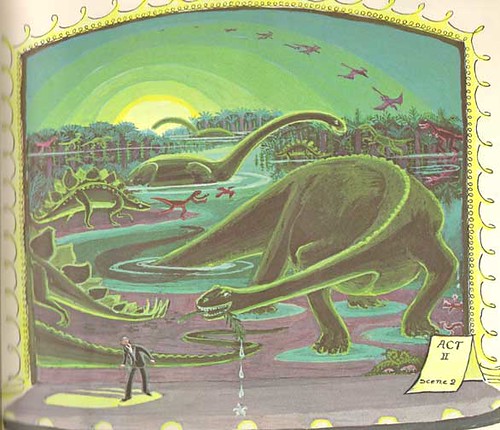
The book is no less than a dramatization of the history of life on Earth, starting with the formation of the seas and going on and on through to modern times and Burton's little house in the Massachusetts countryside.
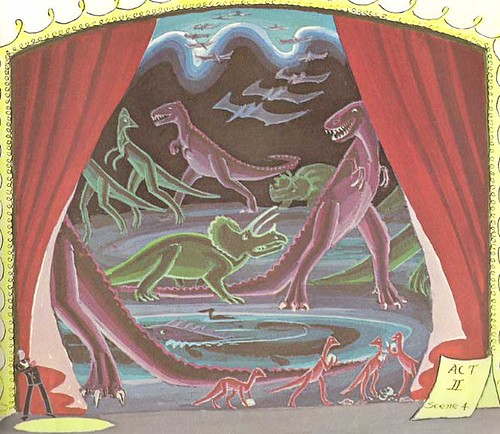
Obviously, the animals are very stylized throughout, but I love the sheer scope of the book, and I adore Burton's playful folk art.
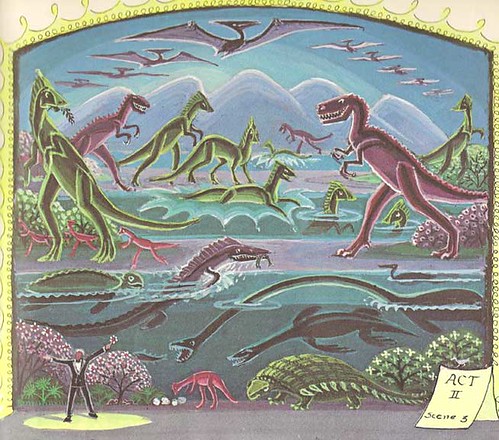 Next up, the most frustrating book of all...
Next up, the most frustrating book of all...----
Sketch of the Day! Eh, just some random stuff:
